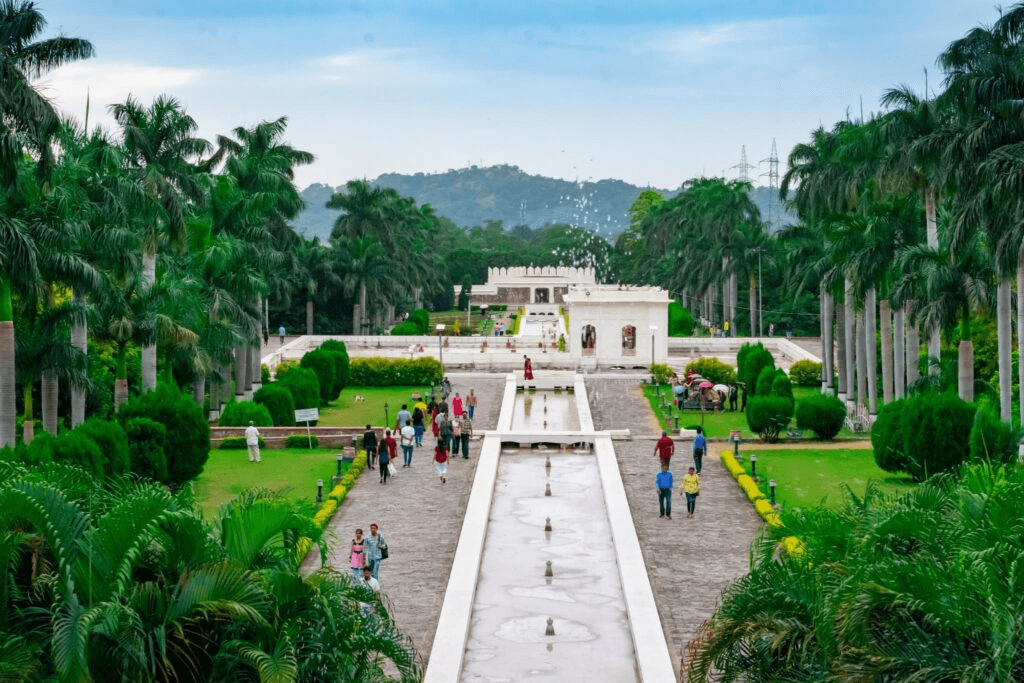Affiliated To CBSE | Senior Secondary | Tech Smart School
About the District

Overview
Panchkula is a planned city and district headquarter in the Panchkula district, part of the Ambala division in Haryana, India. The origin of the name Panchkula came from the place where five irrigation canals meet. At present, it forms a part of an adjoining area to the Chandigarh, Mohali and Zirakpur. It is approximately 4 km southeast of Chandigarh, 105 km southwest of Shimla and 259 km northeast of New Delhi, the national capital. It is a part of the Chandigarh capital region or Greater Chandigarh. The Chandigarh-Mohali-Panchkula metropolitan region collectively forms a Chandigarh Tricity, with a combined population of over two million. It is a planned city like Chandigarh, with a sector system.
Geography and climate
Panchkula district has a sub-tropical continental monsoon climate with hot summers, cool winters and monsoon rainfall. It has great variation in temperature (−1 to 43 °C [30 to 109 °F]). Sometimes winter frost occurs during December and January. The district also receives winter rains from the western disturbance. The rainfall is mostly received in the monsoon. Morni hills constitute the highest point of the district as well as of Haryana. The Ghaggar is the only perennial river, which is very shallow outside of the monsoons. The mountains and hills of Kasauli are clearly visible from Panchkula.
Generally, the slope of the district is from northeast to southwest and in this direction, most of the rivers/streams rain-fed torrents flow down and spread much gravel and pebbles in their beds. The underground water in the district is generally fresh and suitable for domestic and irrigation purposes. The underground water level is generally high in the southern parts and low in the north and northeast which is hilly tract.
Generally, the slope of the district is from northeast to southwest and in this direction, most of the rivers/streams rain-fed torrents flow down and spread much gravel and pebbles in their beds. The underground water in the district is generally fresh and suitable for domestic and irrigation purposes. The underground water level is generally high in the southern parts and low in the north and northeast which is hilly tract.

Tourism
There are various tourist attractions in and around Panchkula including:
- Patiala temple, constructed 1840 AD by Maharaja of Patiala, within the Mansa Devi temple complex in Panchkula.
- Mata Mansa Devi Mandir is one of the most prominent temples in North India and is dedicated to Goddess Mansa Devi, a form of Shakti.
- Bhima Devi Temple Site Museum, nicknamed Khajuraho of North India for its erotic sculptures, comprises the restored ruins of an ancient Hindu temple dating from between 8th and 11th century AD.
- Nada Sahib is a Sikh Gurudwara in the Panchkula district of the Indian state of Haryana. Situated on the banks of the Ghaggar-Hakra River in the Shivalik Hills.
- Morni, the hill resort at Morni Hills, an offshoot of the Shivalik Hills, are about 30 kilometres from the city. The hills were named for Queen Morni, who is said to have ruled this city.
- Pinjore Gardens, also known as Yadavindra Gardens, are about 20 km from the city and cover a total area of 100 hectares (250 acres). The work of creating the gardens began in the seventeenth century. Pinjore Gardens is the venue for an annual mango festival. The garden houses a mini zoo, historic places, a Japanese garden, a nursery and a number of picnic spots. According to Hindu theology, the Pandava brothers rested in Pinjore during their exile.
- National Cactus and Succulent Botanical Garden and Research Centre a 7 acres cactus garden in the center of Panchkula, was established in 1987 and is known for its rare and endangered species of Indian succulent plants.
- Kaushalya Dam is an earth-filled barrage dam on the Kaushalya river in Pinjore. It is an important wetland that is home to many endangered migratory birds.
- Bir Shikargah Wildlife Sanctuary, Khol Hi-Raitan Wildlife Sanctuary, Pheasant Breeding Centre, Morni, Jatayu Conservation Breeding Centre, Pinjore, Pheasant Breeding Centre, Barwala.

